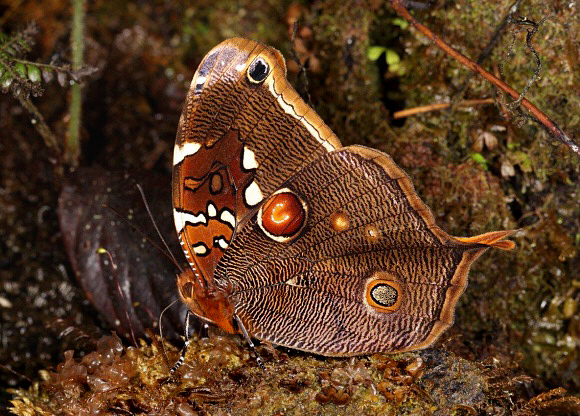 Opoptera arsippe, northern Peru – Tony Hoare
Opoptera arsippe, northern Peru – Tony Hoare
Introduction
The Morphinae comprises of about 140-150 neotropical species, of which 93 are included within the tribe Brassolini. Of these 73 are placed in the Brassolina – a subtribe including the genera Brassolis, Blepolenis, Caligo, Caligopsis, Catoblepia, Dasyophthalma, Dynastor, Mielkella, Eryphanis, Penetes, Mimoblepia, Opoptera, Opsiphanes, Orobrassolis and Selenophanes. All Brassolines are crepuscular or nocturnal in behaviour, although a few species also fly by day in the darkest areas of the forest.
The genus Opoptera comprises of 6 known species – aorsa, arsippe, fruhstorferi, sulcius, syme and a newly discovered Peruvian species that has not yet been named.
Opoptera arsippe is distributed from Ecuador to Bolivia.
Habitats
This species is found in primary and secondary rainforest, and in cloudforest at altitudes up to about 1500m.
Lifecycle
I have no data specific to arsippe but the lifecycle is likely to be similar to that of aorsa as follows: The eggs are white and globular, finely ribbed, and laid in clusters of between 2-5 on leaves of the foodplant Chusquea ( bamboo ). The larva is pale green, with a series of thin brown and yellowish lines along the back, and a pair of brown caudal tails. The head is pale brown and has a pair of long black horns, and a short pale horn on each cheek. The chrysalis is long and cylindrical, tan coloured with numerous fine dark striations, and has the general appearance of a piece of bamboo stem.
Adult behaviour
During daytime Opoptera rest on decaying stems or thin branches at a height of about 1m but they are normally only seen at dawn, when they visit rotting fruit or herbivore dung on the forest floor.
